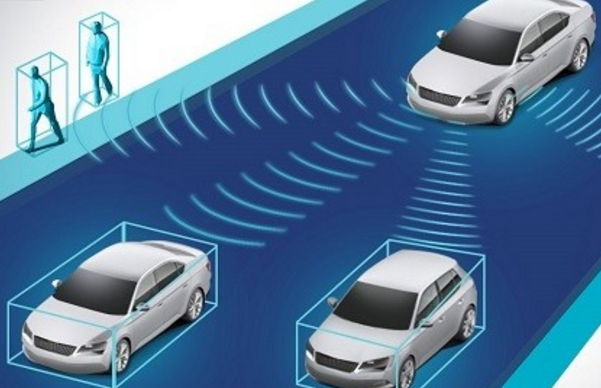[Chinese instrument network instrument research and development] Recently, the French research institute CEA-Leti has developed a new tool that can be used to provide transportation data, including a wristband-type wearable pressure sensor that can be worn by commuters, and a smartphone matched with it. An application (App) can be used to detect the mode of transportation used by the wearer and evaluate the impact of the user's decision on the environment.

Stephanie Riche, director of the CEA-Leti Sensors and Systems Lab, said that from a proven and reliable experimental protocol, this is the world's first pressure sensor to be validated from laboratory and real life experiments.
Richie said: "Last year, many stress monitoring programs were released, but it is very challenging to monitor the pressure with wearable devices. The key is to set up experimental protocols in a reliable and repeatable manner."
The new pressure sensor combines accelerometer, current skin response, and heart rate information to assess the user's stress level. CEA-Leti's research focuses on signal processing (no need to specify sensor hardware) and generates new indicators to track the degree of stress in real-life situations.
CEA-Leti's Mobility Observer App helps the user to understand the environmental impact of the transport method they choose.
When people are on the move, it is extremely difficult to obtain reliable biometric information. Therefore, CEA-Leti studied the characteristics of existing wearable sensors under actual conditions of use to eliminate erroneous or irrelevant data. Researchers also used the famous "Trier Social Stress Test" to make a reference database from the signals collected by the laboratory. According to this database, machine learning algorithms can classify different levels of stress.
Riche said: "We have observed that in advanced societies, there are more and more stressful situations. We want to see how we can use our signal processing methods to provide favorable technical solutions to help solve these new social problems."
Reduce greenhouse gas emissions
The Mobility Observer, a smartphone app developed by CEA-Leti, uses smart phone accelerometers, magnetometers, gyroscopes, and sometimes GPS, to determine if a user is standing or what kind of transportation is used. Walk, ride a bicycle, drive a car or an electric car, or take a bus, MRT or train. The app can identify features from different vehicles through vibration or other parameters, and generates 14 input functions for machine learning algorithms to determine the transportation modes used by users.
It is understood that transportation accounts for about 23% of the total greenhouse gas emissions in Europe. Researchers hope that the App can meet the challenges of sustainable development. Therefore, the App provides users with a choice of daily transportation options (eg, riding a bicycle instead of driving) and how they affect the quantitative information of the environment.
Riche said: "For example, if you were to drive to work every day and then change to cycling to work one day a week, we can regularly and every month or every month to periodically inform you of your contribution to reducing greenhouse gas emissions."
Combining pressure sensors with the Mobility Observer App, a special synergy is played. CEA-Leti has been working with the European city government and transport agencies to apply this system to collect information that was previously difficult to obtain under its infrastructure.
Riche said: "Transportation agencies can observe the pressure on a particular bus station, or how the internal arrangement of buses affects the pressure of a group of people. The system can really change the way the city government decides to invest in infrastructure." Currently, they are Conduct manual observations of people’s transportation habits—deliver people at specific locations in the city to calculate how many vehicles, bicycles, or pedestrians pass. When the Mobility Observer App is deployed on a large scale, it is able to generate user-customized information in real time.
The combination of data can also be used in the future to allow transportation companies to provide more advanced services. For example, Riche suggested that the app could determine if he was too late based on the user’s stress level and suggested a parking space closer to the train station (even though it may cost more). Users can also get health and fitness information. For example, how much more can you bike than burn a car's calories? Or which type of transportation is less stressful and so on.
(Original title: Wearable Pressure Sensor Improves Transportation Efficiency)
Parts Assembly for Industrial Usage
Material: Q235 / Q345 / Carbon Steel / Ductile iron / Customized Material
Process: Forging / Investment Casting / Machining
Surface: Zinc / Chromium / Electro Plating / Dacormet / Painting / Others
Looking for ideal Industrial Parts Assembly Manufacturer & supplier ? We have a wide selection at great prices to help you get creative. All the Parts Assembly we made are quality guaranteed. We are China Origin Factory of Industrial Parts Assembly. If you have any question, please feel free to contact us.
Parts Assembly
Part Assembly,Assembly Metal Parts,Industrial Parts Assembly,Casting Forged Steel Parts Assembly
J.B MACHINERY (NINGBO) CO., LTD. , https://www.jbcastings.com
![<?echo $_SERVER['SERVER_NAME'];?>](/template/twentyseventeen/skin/images/header.jpg)